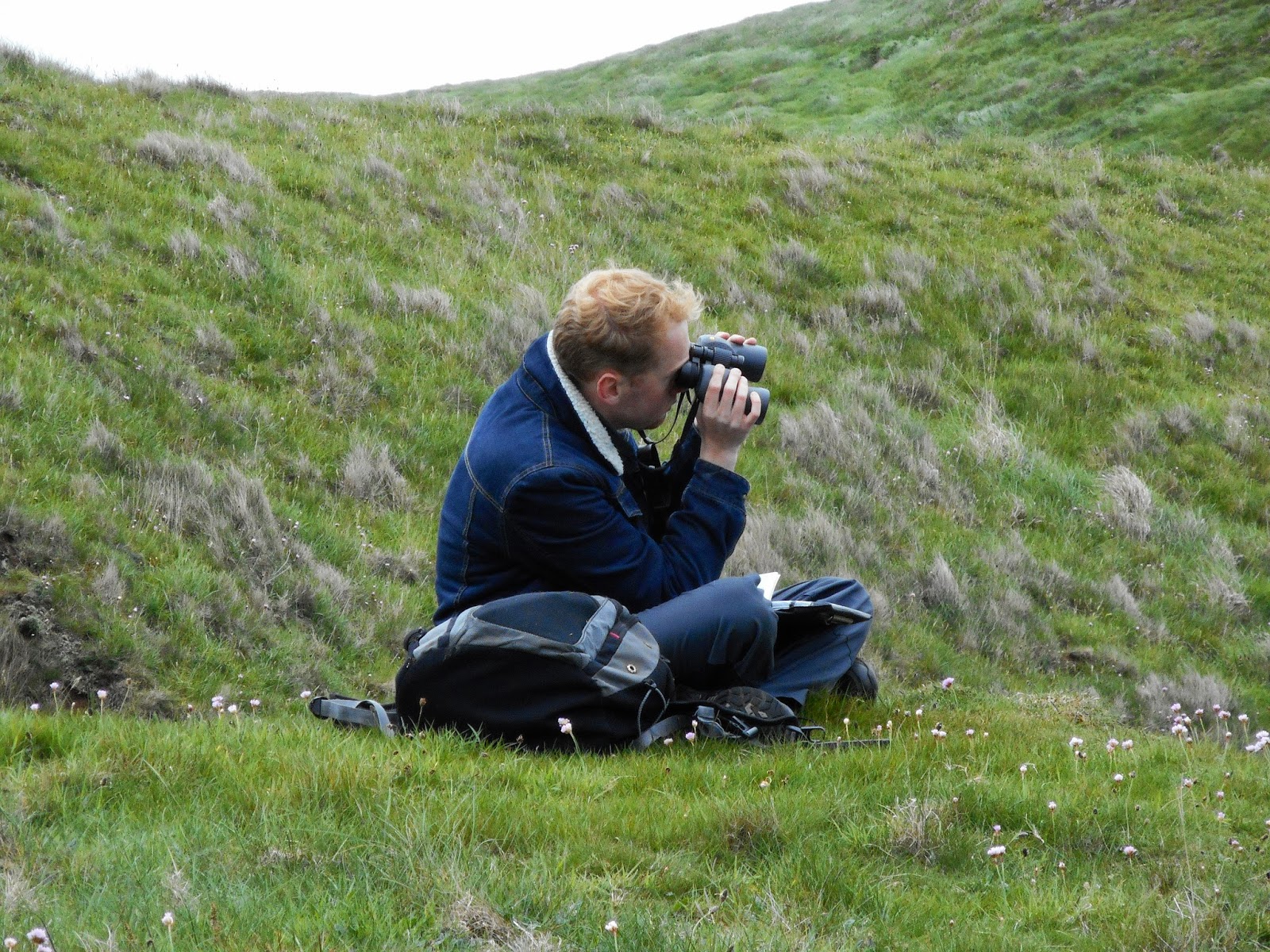2014 marks an important milestone
for the team here at St Abb’s Head with the opening of a new long term
voluntary placement allowing would be rangers to experience life on the reserve
and gain some practical experience in the field of conservation. We were lucky
enough to have a good few applications and I am delighted to announce that our
new Assistant Ranger, James (pictured left), started work with us at the start of May and is currently
settling into life here at St Abb’s Head. Here’s what James has to say about himself.
Hi everyone. I’m James, the new
Assistant Ranger here at St Abb’s Head. For the duration of my time here I will
be posting using this red colour.
Where to start? I’ve been here for a
fortnight now and already I’ve found myself in love with St Abb’s Head. Must be
the sea air! It truly is a great place to be and is vastly different to my
previous surroundings in Cumbria where I studied BSc Animal Conservation
Science for the past three years. I love a challenge however and am really
looking forward to experiencing the more practical side of conservation!
So why St Abbs? Well, simply put my
main interest throughout university and beyond has always been birds. What
better place to learn the ropes so to
speak than a site that hosts 45,000 breeding seabirds, numerous farmland species
and of course the regular rarities that send local birders into a frenzy
whenever they drop in. Secondly, I’m a local lad so to speak having grown up
just down the coast in Northumberland. As such volunteering at St Abbs allows
me to directly partake in the conservation of the same stretch of coastline
that has provided me with many fond memories since my childhood. Finally, experience!
There’s only so much you can learn with your nose in a textbook. This role will
undoubtedly help broaden my knowledge as well as giving me a taste of practical
conservation.
This being my first real experience
of a coastal reserve it seems I have arrived at exactly the right time with the
first shag chicks having already hatched, guillemots and razorbills sitting
tight on eggs and kittiwakes adding the final touches to their cliff side
nests. Exciting times! Couple this with the steady passage of other interesting
birds such as spotted flycatcher, common sandpiper and ring ouzel and the sheer
abundance of butterflies and you have the makings a wonderful spring!
What next? Well the next few weeks
will see me helping Liza and Jack out with a host of tasks around the reserve
but also beginning to monitor razorbill and guillemot breeding productivity.
The latter of which has never been done before! Obviously it’s going to be a
challenge (guilles aren’t the most obliging of research subjects) but all will
be well I’m sure! For now I’ll leave you with a few photos snapped around the
reserve during my first few weeks.



